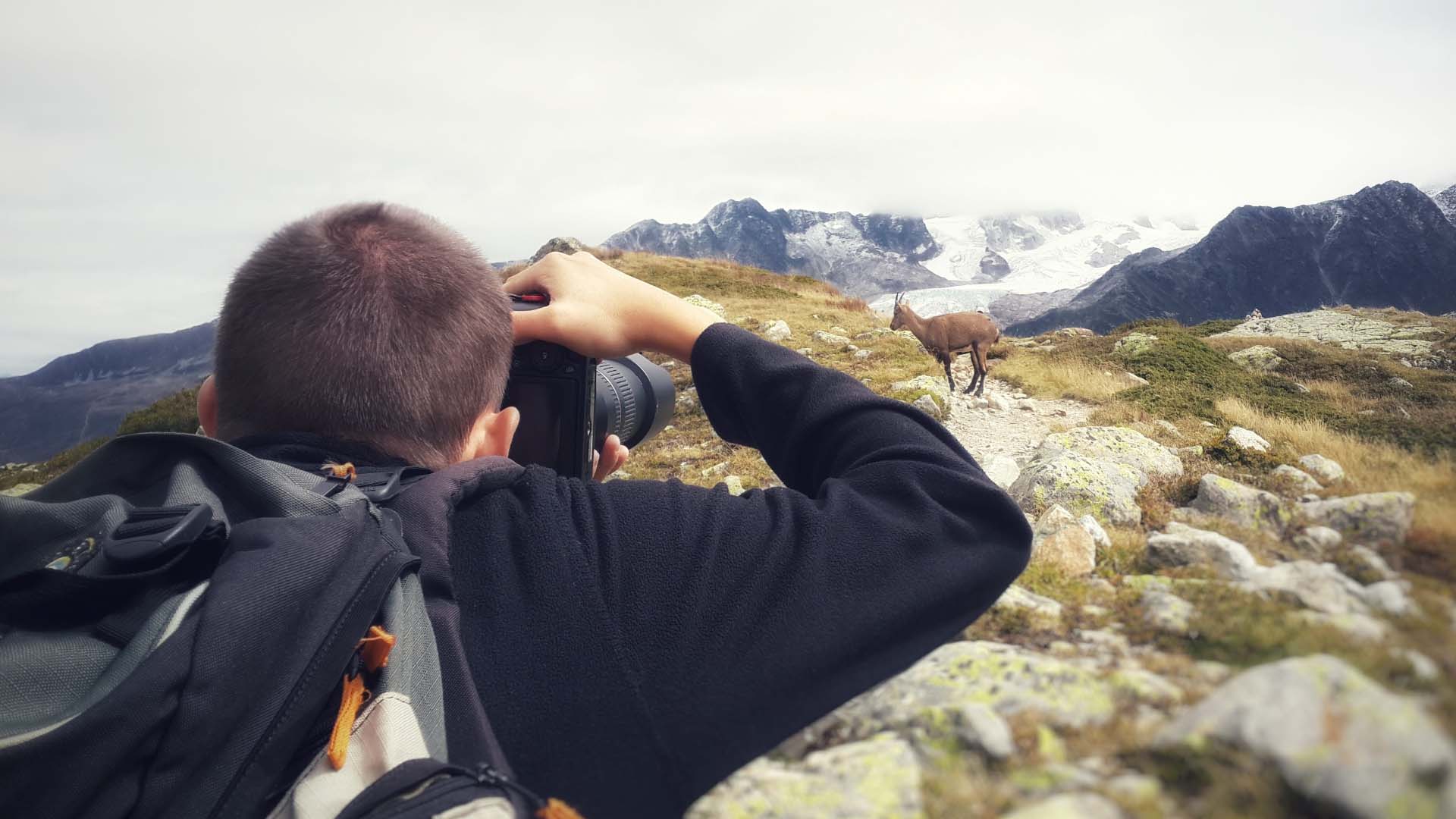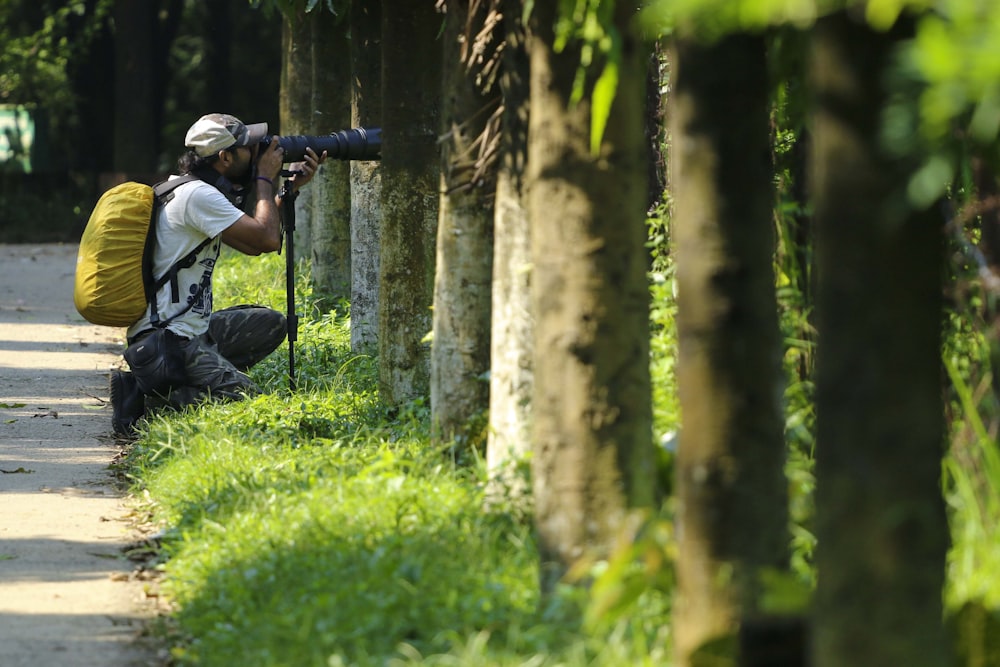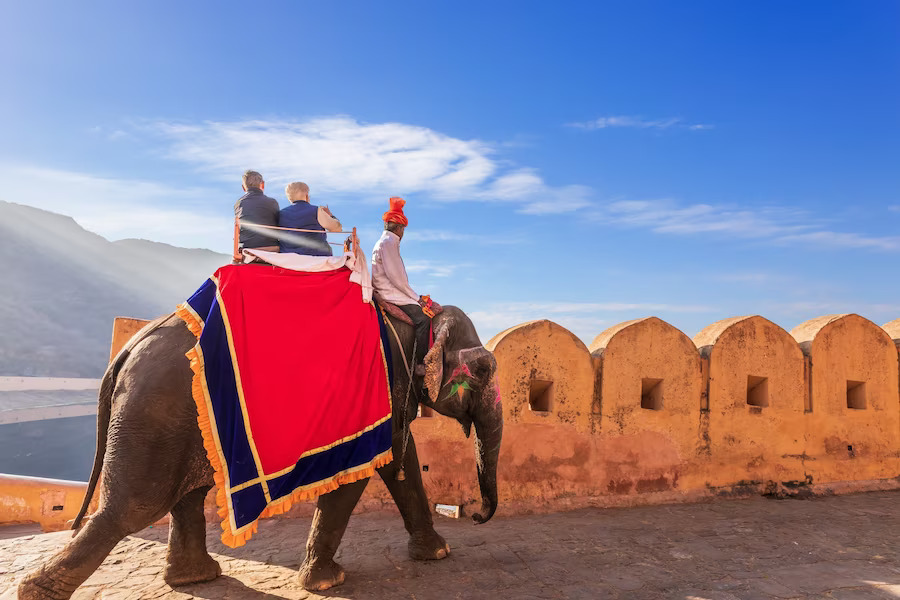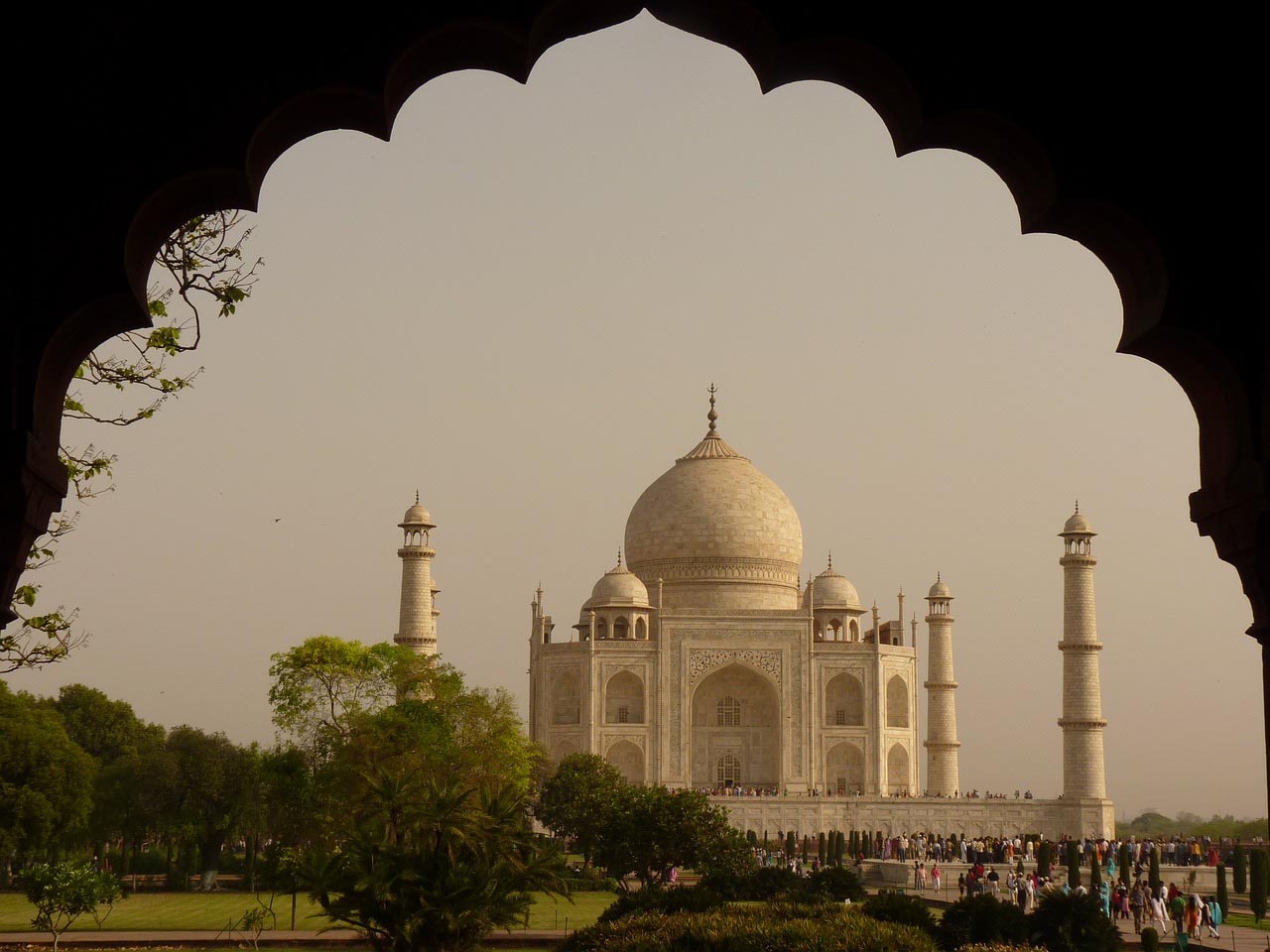
Kailash Manasarovar Aerial Darshan at Just @ Rs 35,000 Reserve Your Seat Now! Click Here

Love going on wildlife watching and safaris? Wildlife photography will change your perspective towards nature. You will enjoy and love its serenity. You can keep track of animal behaviour and photograph animals for long-lasting memories. Therefore, you should educate yourself about animals, preserve their habitats, and respect their behaviour if you're interested in wildlife photography.

But wildlife photography is more than just taking a perfect shot. It's about being part of that environment, spending time in nature, and enjoying the magical moments of meeting animals in their habitat. Wildlife photography instills a love for nature and kindness, and one cherishes every moment in the lap of Mother Nature.
These photography tips for wildlife travellers will address the key points you must master and understand to give you the best foundation for becoming a successful wildlife photographer.
All the famous wildlife photographers began their careers as amateurs, documenting the local animals before being featured in National Geographic or any wildlife documentary. You can also start from your surroundings and expand eventually. Non-exotic animals can also be used as a subject. It is challenging to capture images of even the most common wild creatures.
Do your research. Try to find answers to questions: Where to look for wild creatures? What time would be ideal to visit them? At what time of the day are they the most active?
One of the most crucial wildlife photography tips is to study your subject thoroughly before going out to capture them. It improves your chances of returning home with stunning images. Consult the neighbourhood authorities or watch for groups and communities of wildlife enthusiasts and researchers. Suppose you are interested in a specific animal or bird; research that species' habits. You can locate woodpecker nesting holes if you know the trees woodpeckers like. Instead of pointing your camera towards the treetops only to watch them fly away, it is much simpler to take pictures of them when you know where they rest.
Each photographer has a unique strategy and technical tricks. Read their books and testimonies, hold discussions with them, or study their work. Follow the steps of your favourite photographer. Analyse their pictures. Try to develop your own strategies and approaches.
Go forward by studying different angles the experts use. Where does the light originate from, and how does it feel? The photographer's position concerning the subject and the light is essential. You'll see that they emphasise a setting (such as Africa), a species (such as giant cats), or a compositional technique (such as animals in motion).
Experts create excellent works by specializing and becoming masters in a particular field. Avoid making a long list of animals you want to capture. Spending more time on fewer subjects enables you to concentrate and capture them in better lighting and with more intriguing positions or movements.
Wildlife photography often requires the use of complicated equipment. You will spend much time preparing for your photo shoot, especially if you choose remote locations. Before packing your camera, you need to figure out the details of what you want to photograph. However, you will increase your chances if you research the location, the best time of the year to visit, the weather, the best time to meet the animals, the travel conditions, the equipment, and whether you need a guide.
You'll often carry your equipment in a backpack. Wildlife photography requires telephoto lenses with at least 400 mm focal length, rapid focusing, and wide apertures. The lens should be as light as possible. Even though you may obtain excellent photos with a 200 mm lens, the Tamron 150-600 G2 is a fantastic beginning lens for wildlife photography. Bring along a teleconverter if you want to increase the focal length of your lens.
Additionally, you will want a sturdy yet lightweight tripod that can be lowered to allow you to take pictures of small animals or hide in the grass. Batteries, memory cards, a charger, and waterproof cases or rain covers should also be included in your travel-sized bag. Consider bringing a portable hide to maximise your chances of avoiding detection.
Another best photography tip for wildlife travellers is to remember that speed is crucial. Any techniques enabling you to push the shutter release more quickly are acceptable. So, before photographing timid creatures, get familiar with your camera and lenses and study them thoroughly. You should know more than just the buttons off-by-heart. You must also become familiar with particular methods, such as holding a steady, hefty lens while capturing a moving subject. If you have yet to spend hours preparing beforehand, framing a moving animal using a 600 mm prime lens will be difficult.
You will be prepared when necessary if you start practising getting the animal into the viewfinder and focusing as fast as possible. Start from far away and move subjects as soon as possible into the viewfinder. Move on to faster-moving things closer to you after you have grasped the basics.
The best wildlife photographers regard and honour the creatures and their surroundings. In photojournalistic wildlife photography, the photographer records the occurrences rather than initiating or influencing them. This blog about tips for wildlife photography provides a comprehensive overview with a ton of advice to get you started on this career path.
However, only some approach it in this manner. Some dishonest photographers shock animals by approaching them too closely or scaring birds that fly them away. The photographer's intention must be to avoid influencing the behaviour of the animals. Ideally, the animal should be unaffected by your presence and go about its regular routine.
You may decide where to place yourself and the camera based on your subject's behaviour, the wind's direction, the sun's angle, and the topography. After that, it will be challenging to switch your stance without frightening the subject away. The animal's eye is one of the most important subjects to focus on while photographing nature. It will give the composition more depth and significance. You'll lose the shot if you miss the focus. When using telephoto lenses and telephoto zooms, which have relatively tiny depths of field, mainly when using wide apertures, it is crucial to pay close attention and maintain a sharp look.
Even if it means lying on the ground or climbing a tree, try to hold the camera at the animal's eye level. Another useful portrait photography trick is leaving space in front of the subject so the spectator can follow the animal's gaze. Your photograph will be considerably striking if you can capture the animal interacting with other animals or making a gesture. Remember to inspect the area before activating the shutter release.
Along with your camera, get yourself weather-ready. Be prepared for every weather condition, whether sweltering hot in the summer or chilly trips up north. Always wear layers to take some off as the day warms up, and put some back on as the temperature drops. Once you find an ideal position, you may settle down as wildlife photographers usually remain at one location for a long time. Bring a cushion, a blanket, or something else to sit or kneel on. Good hiking boots, caps, and gloves are also essential.
Bring a pair of hiking footwear, beach sandals, or mud- and water-resistant boots. Wear dark clothes to help you blend in with your surroundings when shooting. A bird can spot you from a mile away if dressed in a big, flashy white t-shirt. This photography tip for wildlife travellers will help in the long run.
If pursuing wildlife photography, it is essential to have patience and maintain calm. You will have to visit their homes, study their environment, and their feeding grounds. Check the tide reports, the weather, and the moon phase. All these factors increase the chances of successfully finding your desired subject and photographing them. While on your hunt, if you do not find any animals, be patient and wait to see what happens. When you see one, avoid running towards them. Also, if the subject seems scary, stop, sit, and wait for your chance.
It takes dedication and commitment to capture wildlife. It might be costly and uncomfortable, but it's one of the few ways to interact with wild creatures. You become their friend and get the rare opportunity to watch how they act. You must have technical and subject knowledge to specialise in wildlife photography. You will have many exciting experiences and spend a lot of time outside.
You should also learn how to operate the autofocusing feature on your camera. Play with it in various situations, particularly when things are moving. Be prepared to utilise the burst mode's continuous focus tracking if you're pursuing an object that travels quickly. Most of the pictures may got to waste, but if you are familiar with your camera, you will also get good photos in one go. Every camera has its limitations. Your best strategy is often to get proficient at the most basic autofocusing mode. Your photography subject may frequently move too fast in the field to flip between modes instantly. Therefore, finding the settings you like and keeping them on default is preferable.
It is hard to get the animals to the position where we want them shot, but you must be ready with your composition. You can prepare your shot composition and shooting angle before waiting for your subject to cooperate. With a telephoto lens, it pays to plan the majority of your photos from close to the ground because animals are generally low to the ground. In these kinds of photographs, the setting is essential yet often ignored. It is simpler to capture more of the backdrop landscape from a low vantage point. A tiny piece of context may give an image its full backstory. It adds the geographic location and sometimes even the time of year.
Remembering this, you might also want to think about zooming out at times. The distinction between wildlife and landscape photography will be blurred by shrinking the subject size and including background scenery. And that's a good thing since the most compelling pictures of animals are those taken in their actual habitat.
Knowing how your camera performs in low light may significantly improve the quality of your images. You're frequently on the verge of using a long lens with slow speed of shutter rates and high ISOs. If you don't, you increase the chances of getting hazy pictures. For lenses like this, image stabilisation is crucial, and the best ones come with integrated optical systems. It adjusts for hand instability and any wind-related disturbance.
Sometimes, you'll need to increase the ISO slightly. If you try to capture the motion of a fast-moving object, like a bird, you generally won't be able to. The high ISO features of new camera models are fantastic. Still, you must be familiar with your camera well enough to recognise when the ISO will result in excessive noise and grain. Even if these photographs are technically flawless in every other way, they will likely need to be more helpful. Even if your wildlife photography camera has an ISO sensitivity range of 102,400, you shouldn't use it.
This is another essential photography tip for wildlife travellers. Prioritise the well-being of animals. It's inappropriate to pay beaters to pursue animals in your path, feed animals, or terrify animals into running or flying. All you need to do is take pictures of the animals in their natural environment without making any changes. You shouldn't let them know of your presence. Plan your photo shoot around the golden hour to improve chances of getting beautiful pictures. Additionally, light plays a more active role in compositions and produces shapes, golden lighting, and other effects.
Stay quiet and minimise sudden movements to prevent startling the animals. Use natural light as much as possible; avoid flash photography, which can startle or distress wildlife. Respecting the animal's lifestyle and habitat ensures that your wildlife photography contributes positively to conservation efforts and preserves the integrity of these incredible creatures and their ecosystems.
Do not direct all your attention to the viewfinder since you may risk missing action due to the viewfinder's limited field of vision. Keep an eye out for any activity from animals or predators, such as birds taking flight or crushing twigs. Bringing binoculars will allow you to view further and determine whether your following location will yield better results.
Also, sometimes wildlife encounters can be unpredictable. Staying attentive to your surroundings is beneficial for your photography, your safety, and the welfare of the animals. If you are in their territory to take their pictures, it’s your responsibility to do your job without causing harm or disturbance. As responsible wildlife photographers, we need to remember such wildlife photography tips.
The setting and background is just as crucial as the subject, if not more so. Keep an eye out for any distracting factors. A small movement to the left, right, or up or down, such as a branch poking out of the bird's head or bright or dark areas can interfere with the viewer's enjoyment of the scene's main essence. Consider that if these background elements are absent, we can fully appreciate your subject since the human eye naturally moves toward them. Additionally, consider how the backdrop colour can enhance your shot by placing a brightly coloured subject—such as a bird—against a vividly coloured background, such as a sky.
Conversely, the background can add context and depth to your wildlife and travel photos. It can tell a story about the animal's habitat, behaviour, or interactions with other wildlife. Selecting an appropriate background can enhance the narrative of your image. In a nutshell, carefully considering the background in wildlife photography can elevate your photos from ordinary to extraordinary.
Photographers frequently capture their surroundings from the "5-foot level" in their images. Simply said, they aim everything at eye level, five feet above the ground, and then wonder why they can't produce an excellent outcome. Get close to your subject by getting down to its level if you want to take pictures of a shorebird only a foot from the ground. The finest photos you will ever shoot are the ones where you focus on the subject's eyes as eye contact captivates the viewer. Additionally, it enables you to interact more closely with your subject.
Moreover, different perspectives help tell diverse stories. By getting close for intimate portraits or zooming out to capture an animal in its habitat, you can convey a broader narrative about the subject's life and behaviour. Changing your perspective often involves getting on the same level as your subject. This can create a stronger sense of connection between the viewer and the animal.
Wildlife photography is a great hobby, career, no matter what part of the world you're from or where you want to go. From bird watching that can be done in the city to photography that takes you to the far reaches of the wilderness, capturing real moments in the natural world and sharing them is a powerful tool for conservation and education. Dedication and passion are needed for wildlife photography.
One of the few ways to get near wild creatures can be unpleasant and expensive. You become their friend and get the rare opportunity to watch how they behave. You must develop technical, narrative, and animal knowledge if you wish to take photographs of nature.
As wildlife travellers depart on the journey, you must remember that every click of the shutter carries a story, a message, and a responsibility. Hence, it is not just about capturing the perfect frame; it is about understanding the subject, connecting with nature, and conveying the essence of the wild to the world.
These photography tips for wildlife travellers ensure that their work transcends beyond a mere visual record. It becomes a powerful tool for advocacy, a source of education, and a tribute to the beauty and fragility of the natural world.
Go back to main blog page RECENT POST
RECENT POST  10 Best Places in India to do Activities with Family
13 Feb 2024
10 Best Places in India to do Activities with Family
13 Feb 2024
 Top 20 India's Beaches for Blissful Retreats
24 Nov 2023
Top 20 India's Beaches for Blissful Retreats
24 Nov 2023
 15 Photography Tips for Wildlife Travellers
28 Jul 2023
15 Photography Tips for Wildlife Travellers
28 Jul 2023
 Mughal Empire to UNESCO Heritage Site: Legacy of the Taj Mahal
15 Jul 2023
Mughal Empire to UNESCO Heritage Site: Legacy of the Taj Mahal
15 Jul 2023

All our trips are authentic and carefully designed

Our trips are flexible to alter according to your demand

Our experts have first hand knowledge about destinations

We offer best value for your money invested in touring with us.

With Max Holidays you complete travel in peace of mind
Put us on work to plan your next travel. Send your details to our experts now to get a free travel plan with quote